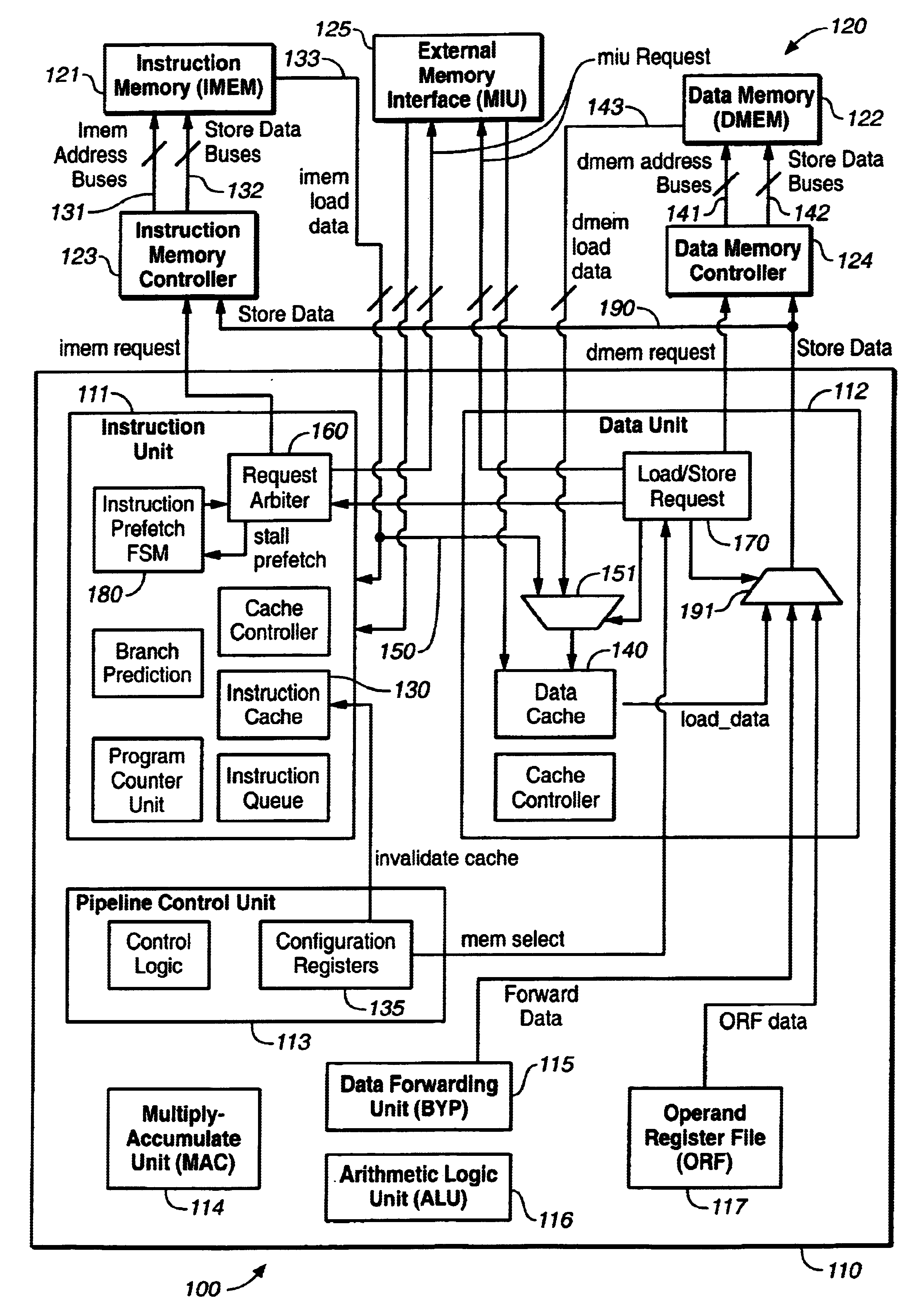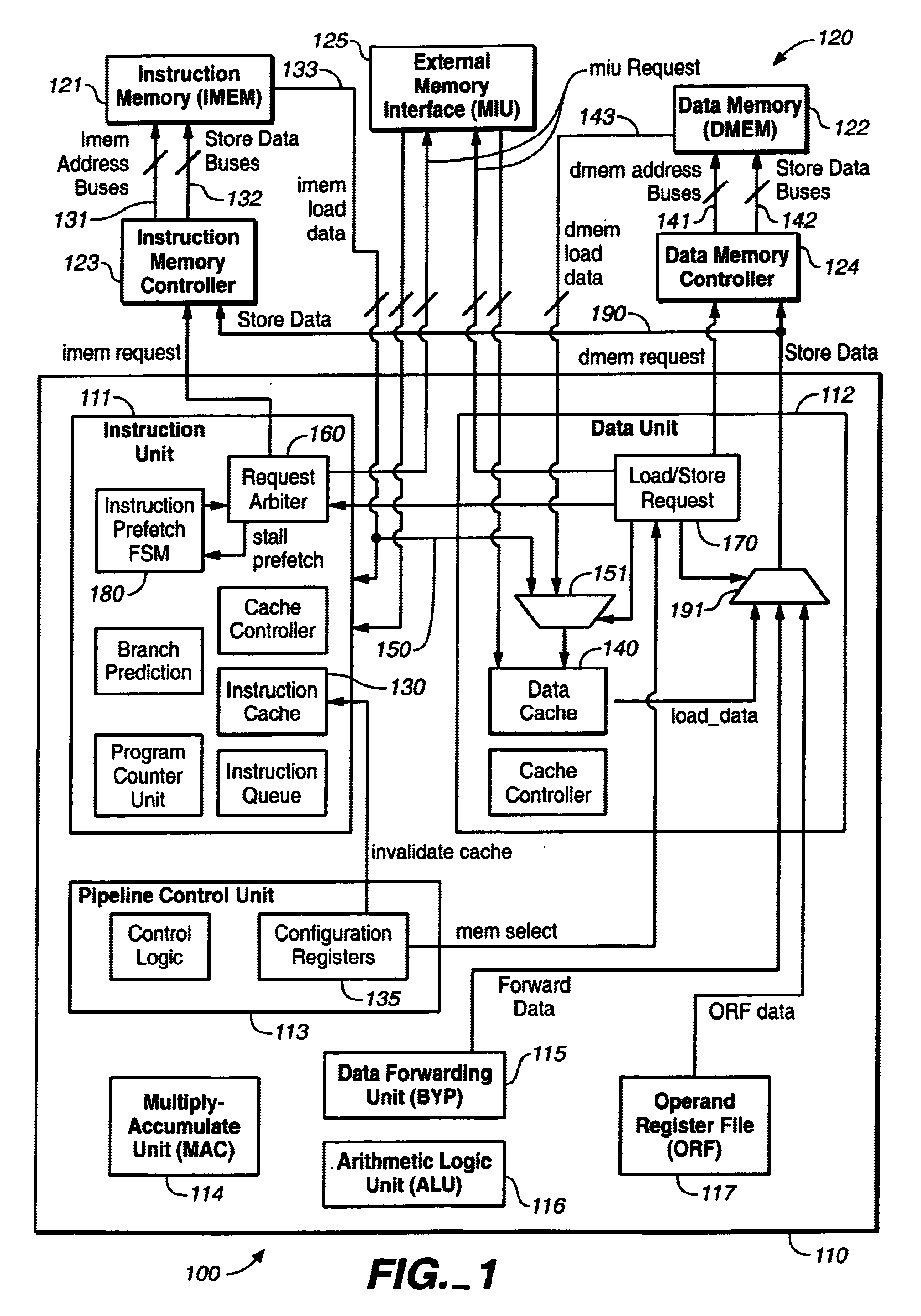Mechanism for supporting self-modifying code in a harvard architecture digital signal processor and method of operation thereof
a digital signal processor and self-modification technology, applied in the field of digital signal processors, can solve the problem that pre-fetched instruction caches should be invalidated, and achieve the effect of minimising the impact of processor performan
- Summary
- Abstract
- Description
- Claims
- Application Information
AI Technical Summary
Benefits of technology
Problems solved by technology
Method used
Image
Examples
Embodiment Construction
Referring initially to FIG. 1, illustrated is an exemplary DSP, generally designated 100, which may form an environment within which a mechanism for supporting self-modifying code constructed according to the principles of the present invention can operate. Although the DSP 100 will now be described, those skilled in the pertinent art should understand that, apart from the novel mechanism for supporting self-modifying code, the DSP 100 is essentially conventional. Those skilled in the pertinent art should also understand that the mechanism for supporting self-modifying code can operate within the confines of other conventional or later-discovered DSP or general-purpose, non-DSP, processor architectures.
The DSP 100 contains an execution core 110 and a memory unit 120 that are located on the same physical substrate. The execution core 110 contains an instruction unit 111. The instruction unit 111 is responsible for ensuring that instructions are properly decoded, fetched, tracked and ...
PUM
 Login to View More
Login to View More Abstract
Description
Claims
Application Information
 Login to View More
Login to View More - R&D
- Intellectual Property
- Life Sciences
- Materials
- Tech Scout
- Unparalleled Data Quality
- Higher Quality Content
- 60% Fewer Hallucinations
Browse by: Latest US Patents, China's latest patents, Technical Efficacy Thesaurus, Application Domain, Technology Topic, Popular Technical Reports.
© 2025 PatSnap. All rights reserved.Legal|Privacy policy|Modern Slavery Act Transparency Statement|Sitemap|About US| Contact US: help@patsnap.com



